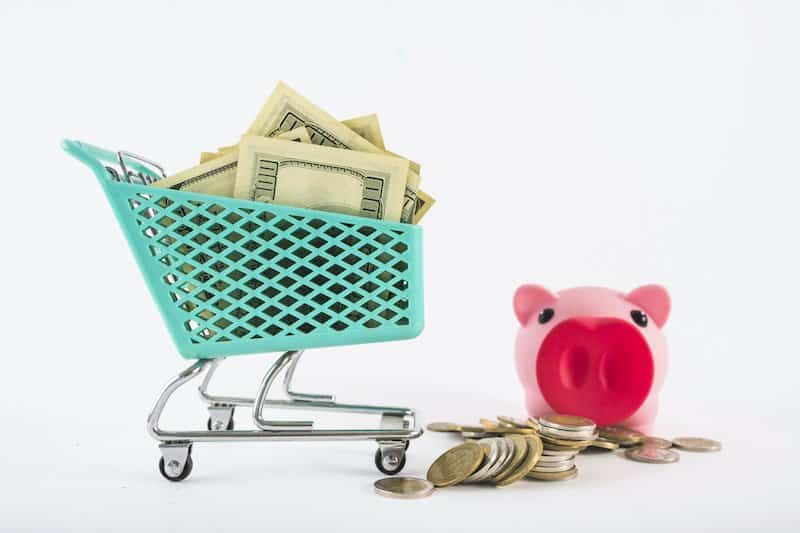Diving deep into personal finance will have you rethink every dollar you spend on non-necessities.
When I started paying off debt, I got so hyped and went into this magic circle of getting my paycheck-saving up to 70%-waiting for the next paycheck to save even more.
This behavior helped me tremendously in paying off my debt faster but made me unhappy. I was obsessing over every “fun” purchase from the past as money I could have saved.
There is this exquisite restaurant with mouth-watering seafood that we visit once in a blue moon. I love every aspect of dining there, the service, the food, the scenery. But every time we got the check, I felt a lump in my throat.
Don’t get me wrong, we could afford it – but I blamed myself and felt ashamed and guilty for spending money.
I was halfway through paying off debt and still felt like a failure for allowing myself a nice treat. I became an over-saver. That behavior was toxic, and I knew I had to switch things up.
I started including personal spending money in our monthly written budget. All my money is my personal money- I earned it, but this sum is mine to spend on anything I want without justifying it.
My partner and I each have separate spending money. He wants to spend his on video games while I splurge on skincare. It feels so freeing to know I allowed myself to spend this money.
How to determine how much spending money you can allow yourself for unnecessary but feel-good purchases?
As a rule of thumb, to avoid the guilt of spending money on fun or nonessential purchases, you should allow yourself 10% of your take-home pay each month as a personal allowance.
How Much Money Should I Allow Myself

The first task you have to do every month you get paid is to list all your expenses. If you weren’t on a written budget by now, it’s time to change that.
I follow the rule of allowing myself 10% of my paycheck as “free” spending money; because it’s enough for me, and it fits in my budget.
The commonly used 50/30/20 rule – 50% for necessities, 30% for wants, and 20% for savings is outdated. If you’re new to personal finance, it’s a good starting point, but you need to make modifications in the long run.
If you’re saving for a down payment on a house, you don’t put 20% aside and spend 30% on fun!
Instead, make a custom budget. Create a category list with permanent expenses and include personal allowance there! For example;
- Mortgage/rent
- Utilities/cable, phone, internet, subscriptions
- Car payments, gas, transportation
- Groceries
- Restaurants and takeout
- Household items
- Pets
- Insurance/savings
- Personal money
What To Use Your Spending Money On
Try to dig through your spending history to paint a picture of what are your weaknesses.
Do you tend to splurge on gas station snacks every time you go to fill up your tank? Don’t include that bill in your gas or grocery category; instead, pay with your spending money.
When you have to deduct a purchase from your personal allowance, you’ll rethink that chocolate bar.
Are work break lunches costing you a lot? Start paying for them with your spending money. I still order lunch at work, but now I do it once or twice a week instead of every day of the week. Try brown-bagging your lunch if you need your spending money elsewhere.
Use Spending Money To Spark Joy In Your Life

The greatest thing about allowing yourself to spend money is you don’t have to give up your sources of joy entirely. Fit your favorites in your spending money by skipping them some days.
I’ll walk you through my budget before and after allowing myself spending money.
Pre-allowance spending:
- Ordering lunch at work 5 days a week – $150
- Snacks from convenience stores – $100
- New skincare products – $70
- Coffee shop trips – $100
- Amazon purchases – $50
That’s a whopping $470 in miscellaneous expenses. I gave myself $300 the following month and look what happened.
Post-allowance spending:
- Ordering lunch at work 2 days a week – $60
- Snacks from convenience stores – $30
- New skincare products – $50
- Coffee shop trips – $80
- Amazon purchases – $20
Down to $240 without cutting off any category, practicing it as much as my budget allows.
Allowing Yourself Spending Money Eliminates Overspending

The unattainable is always more exciting, and when you manage to get it, you can go overboard.
If you ever went on a diet, you know what we’re talking about here. You wouldn’t eat a whole cake on a regular day, but if you deprived yourself of sugar for a month, it’s easy to cave in and ruin your entire process.
It’s the same with spending money. If you allowed yourself a set amount of money you can spend on whatever you want, you wouldn’t fall for the temptation of rank up your credit card with an insane purchase you can’t afford.
Include Self-Care In Your Spending Money

How many expenses in the past 3 months you’ve justified as self-care? Probably more than you can remember.
The self-care propaganda has made us think that self-care is a paid privilege. Everything from massages to manicures gets advertised as a way to take care of oneself.
Self-care doesn’t have to cost money. And it would be best if you didn’t rely on products and procedures as stress-relieving methods.
But if you enjoy getting pedicures or facials once in a while, use your spending money to cover them.
The best way to care for yourself and relieve stress is to have financial stability. Knowing you can cover a $500 emergency in cash is a form of self-care.
If You Can’t Say ‘No’ To Retail Therapy Use Your Spending Money

Retailers thrive on people wanting to improve their mood or celebrate with a purchase. We’ve all done this, and there is no shame in that.
Use your spending money as a guide to avoiding overspending on your shopping trips. Taking $150 for your after-work retail therapy out of the monthly spending money is not as easy as swiping your credit card.
Personal spending money allows you to stay on track while indulging in an occasional shopping spree.
Adjust Your Spending Money To Your Financial Goals
Depending on where you are on your financial journey, you need to switch your focus.
Take the rule of allowing yourself 10% spending money with a grain of salt. If you can accommodate 10%, that’s great, but if your necessities make up 80% of your paycheck and you’ll put 10% towards savings to leave 10% for fun, that’s not right.
The freedom of spending money gives you helps you focus on your other financial goals.
How To Stop Feeling Guilty When Spending Money

It’s okay to spend money. Life shouldn’t be all about restrictions.
Even after becoming debt-free and maxing out their savings, people have a problem with spending money. The minimalist way of living has been a part of them for so long they now feel guilty about splurging with as much as $50.
It’s wonderful and recommended to spend money on things that bring you joy now and then. Spending with intention is different from impulse spending, and you shouldn’t blame yourself.
Determine what makes you happy and plan your money in a way that you can afford it often.
Leftover Spending Money – Where Does It Go

If you managed to save some of your spending money –bravo!
The best part of the spending money allowance is you keep what you don’t spend. You roll it over to the next month!
You can use this method when you want to make a more significant purchase too. Save some of your allowance money each month and get what you wanted without the guilt trip.
For example, I love traveling, but airport personnel destroys my suitcases, and I can’t afford a $1,000 aluminum suitcase in cash. By rolling over $100 each month, I can buy my dream suitcase in 10 months without feeling guilty!
Bottom Line
Personal finance is not about saving as much as you can, but to teach you how to make the most out of your money.
We work to ensure ourselves a better, more comfortable, and stress-free life. Feeling stressed and ashamed of spending money is not healthy. Neither is spending 80% of your paycheck on yourself.
Allowing yourself a set budget of spending money helps you balance between responsibility and fun.
Spending money is something we need to plan for and enjoy.
How much spending money do you allow yourself every month? I would love to read your favorite way to spend them!

